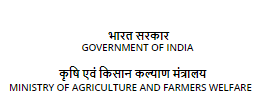Sugarcane Sett Treatment Device

Background:
Sugarcane is a major industrial crop of the country grown in about 4.7 million hectares in both tropical and subtropical regions. Under various climatic conditions, it is subjected to a number of biotic and abiotic stress during its growth. Effective management of any stress is associated with practicability of management practice. For most of the management of diseases, seed treatment plays major role for easy, effective, economical and rapid method of delivering agrochemicals/ microbes. As sugarcane is propagated only by vegetative means, disease problem in the seed canes affects crop health. However, treating sugarcane setts that are required in large volumes for field planting is almost impractical due to its high volume and longer period of soaking. Hence a practically feasible, rapid and effective delivery system having long-term effects with preventive/ protective principles in the integrated management system is required under field conditions. All these factors form the base for the present invention on mechanized means of sett treatment in sugarcane which has been specifically tested for disease management with fungicides/ microbes and validated for producing healthy nursery with various agro-inputs.
Technology Details:
This invention relates to a novel method for effective impregnation of agrochemicals and/or microorganisms and other agro-inputs into sugarcane planting materials viz., single/ two/ three budded setts and bud chips for protection from diseases/ pests and improvement of plant growth. This device works under the principle of negative pressure or vacuum infiltration. This mechanized means of sett treatment is a novel method over conventional method of sett soaking. Also, this method is suitable for different planting materials like stem cuttings, rhizomes, bulbs and tubers of different vegetatively propagated crops.
This method has several advantages viz., mechanized operation, rapidity, effectiveness, amenable for large scale application, capable of delivering more than one agrochemical/ microbe, uniform impregnation of agrochemical/microorganisms into seed material, possibility to combine physical and chemical method of treatment and lesser requirement of agrochemical as compared to conventional soaking. Also, there is no similar technology or unit available for comparison.


